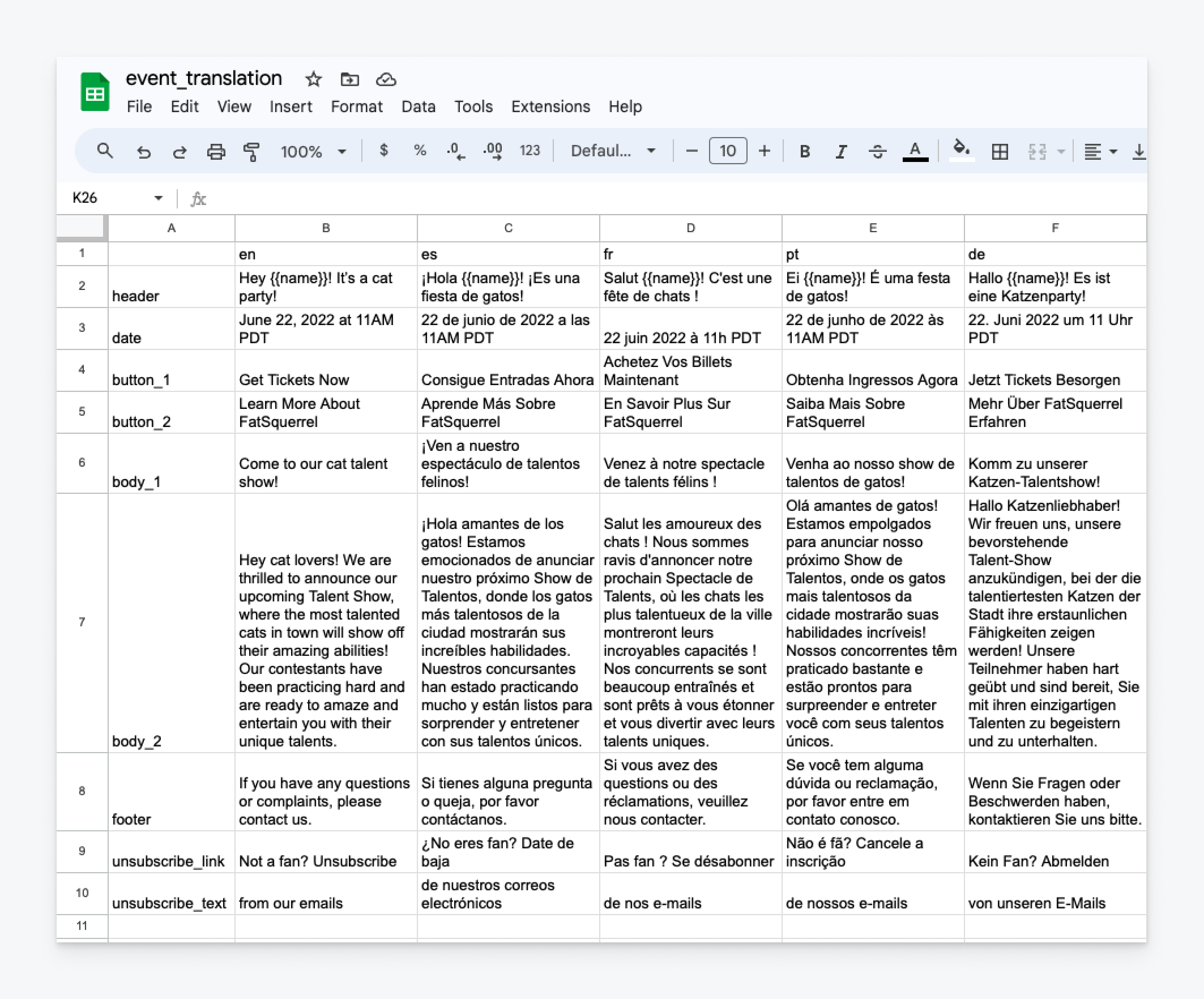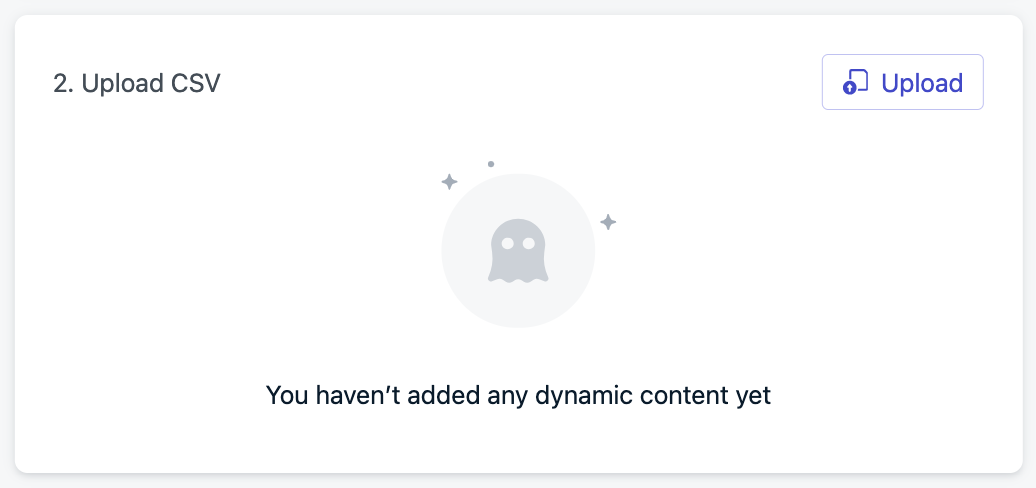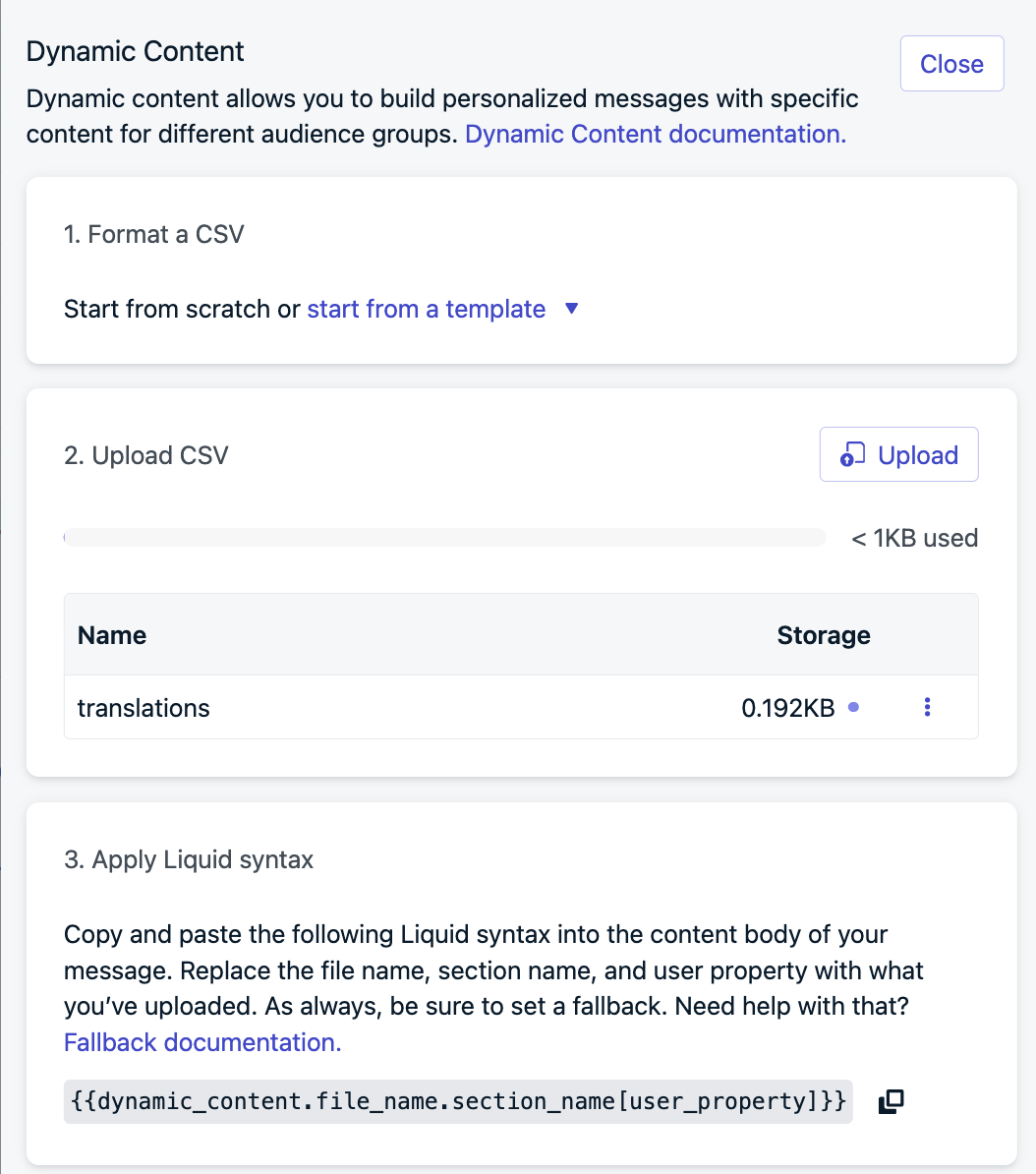Overview
Dynamic Content lets you personalize messages at scale—without creating separate versions for each audience. Whether you’re sending multi-language messages or tailoring content by region or campaign, Dynamic Content allows you to define one message that automatically adjusts for each user. You do this by uploading a CSV file or programatically using our Template APIs with data containing content variations and referencing those values in your message using Liquid Syntax. When a message is sent, OneSignal pulls the appropriate content for each user based on their Data Tags. Dynamic Content works across Push, Email, and SMS, making it ideal for:- Multi-language onboarding or marketing flows
- Region or segment-specific promotions
- Personalization driven by external campaign data
- Personalization at scale – Deliver custom experiences without creating and managing dozens of message variants.
- Multi-language support – Write one message that automatically displays in each user’s preferred language.
- Dynamic segmentation – Change message content based on user properties like language, region, plan, or custom tags such as campaign_id.
- Collaboration without friction – Let translators or non-technical teams create and edit message content directly in CSV files—no OneSignal login needed.
- Cross-channel compatibility – Use the same CSV logic across Push, Email, and SMS campaigns.
- Event announcements per country or city
- Personalized push notifications based on campaign ID or purchase history
- Testing multiple subject lines or messages across user groups
Dynamic Content setup
Create a new message or template. From the dashboard: Select Dynamic Content.- Upload a CSV file that maps message content to Data Tags.
dynamic_content property.
- Great solution if your dynamic content changes frequently.

Dynamic Content button found in the push create editor.
Format your content
You can start with a blank file or choose one of the provided templates:- Multi-language
- Content personalization
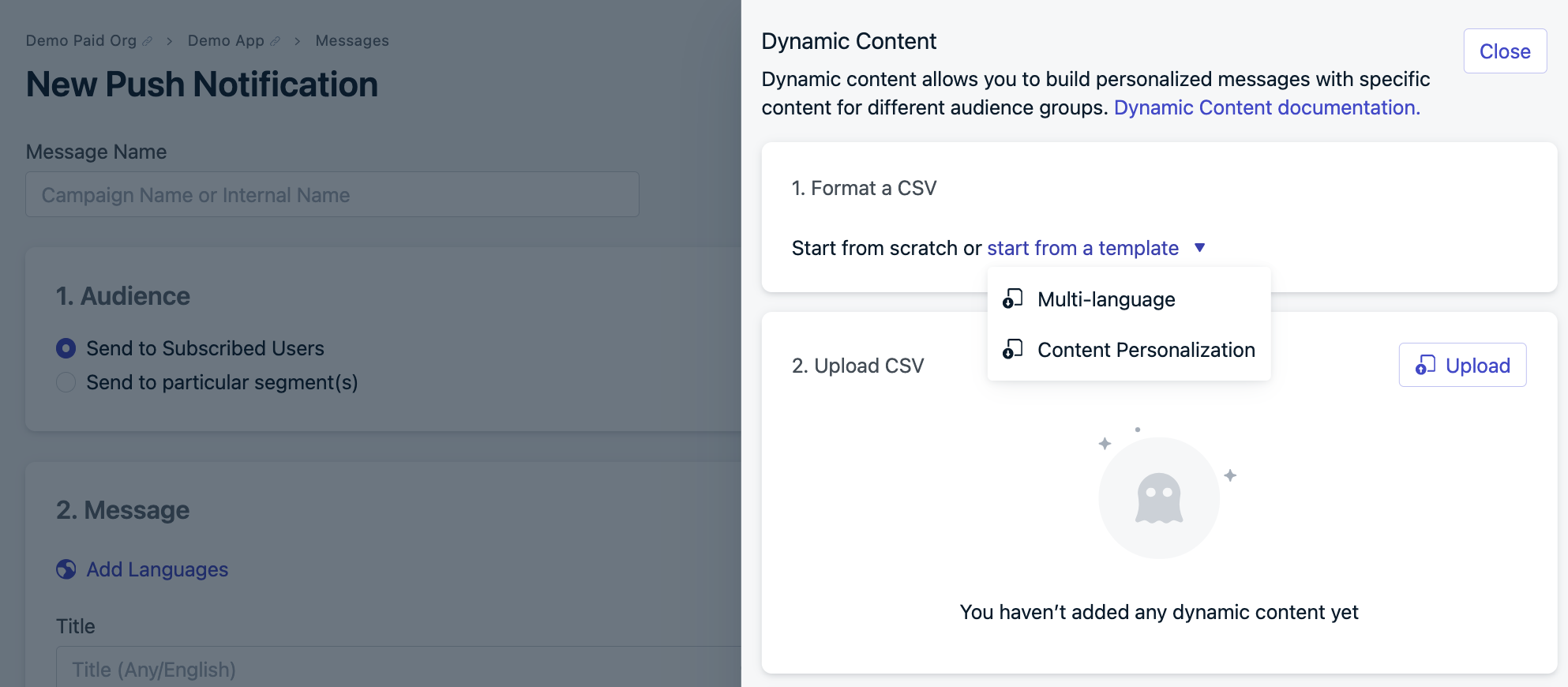
CSV template options provided by OneSignal.
CSV requirements
- File size must be under
200 KB - Column headers:
- Alphanumeric only
- Use underscores (
_) instead of spaces - Avoid special characters
- Ensure UTF-8 encoding in your spreadsheet editor
- Multi-language Example
- Content Personalization Example
subscription.language property to different translations per section.
Similar to a VLOOKUP formula in Excel, we match user attributes with the corresponding content from the CSV.
Reference Dynamic Content in messages
To display personalized content fromdynamic_content, use this Liquid syntax.
file_name: CSV file name (without.csv).section_name: Value in the first column of the rowdata_tag_or_property: Column header matching a Data Tag or subscription property
Fallback content
It is recommended to use hard-coded fallback values. When adding fallback logic in Liquid, do not reference anotherdynamic_content value as the fallback.
If Dynamic Content fails to render at send time (for example, due to a CSV issue, missing row, or template error), any fallback that also depends on dynamic_content will fail, resulting in blank content.
What to avoid
This pattern sets a fallback that still depends on Dynamic Content. If the CSV lookup fails, there is nothing left to render:dynamic_content.my_template fails to load, both the primary value and the fallback are unavailable, and the message renders empty.
Recommended: hard-coded fallback text
Always provide a literal string as the final fallback so your message can render even if Dynamic Content fails entirely.- Dynamic Content is used when available
- A readable message is sent even if Dynamic Content fails
- Users never receive blank titles, body text, or subject lines
Recommended pattern
For multi-language or segmented content, combine:- A supported-values check
- A hard-coded fallback
Why use a hard-coded fallback
Dynamic Content is evaluated at send time. If rendering fails due to:- an invalid CSV
- a missing row or column
- a mismatched tag value
- a template error
- a user does not have a matching tag or property.
- a user has a tag or property that is not available in
dynamic_content.
User does not have a matching tag or property
Ifsubscription.language doesn’t exist, reference the default column from dynamic_content instead.
User has a tag or property that is not available in dynamic_content
If subscription.language exists on a subscription, but not in dynamic_content reference the default column instead.
Examples
Multi-language email
Usetranslations.csv to localize your email:
{{dynamic_content.translations.section_1[subscription.language]}}{{dynamic_content.translations.section_2[subscription.language]}}
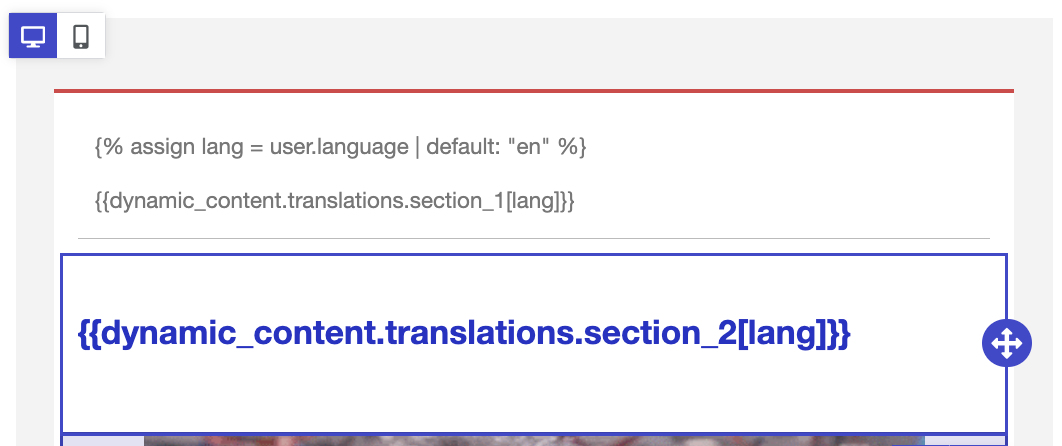
Example shows how to add the liquid syntax for the multi-language example.
Personalized push message
Usecontent_personalization_template.csv for user-specific push messages. Each user’s campaign_id tag determines which row to use.
campaign_id. At send time, OneSignal uses the user’s campaign_id value to select the matching row in your CSV.CSV format (rows keyed by campaign_id)
-
The first column (
campaign_id) is the row key that must match the user’scampaign_idtag value. -
The other columns (
title,message,url) are the fields you’ll insert into the push. -
Include a
defaultrow so untagged or unknown values still render valid content.
How the Liquid maps to the CSV
-
content_personalization_template→ the CSV file name (omit.csv). -
[campaign_id]→ selects the row whose first-column value equals the user’scampaign_idtag. -
.title/.message/.url→ returns the chosen column from that row.
Fallback example (recommended)
campaign_id, title). If you must use spaces or special characters, access with hash notation: 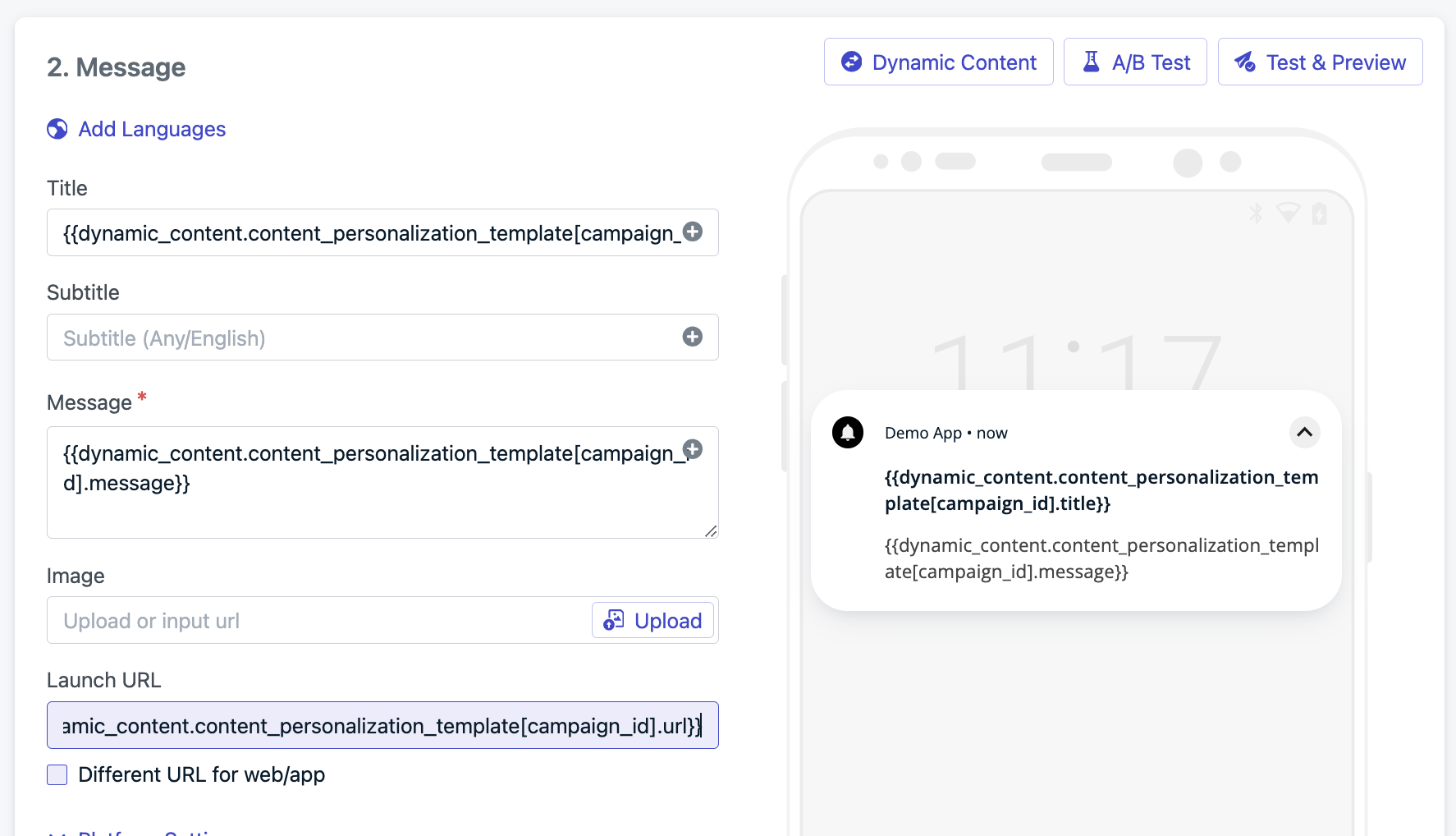
Example shows how to add the liquid syntax for the content personalization example.
Test and preview
Create a test CSV
- Columns:
email,language
- Columns:
external_id,campaign_id
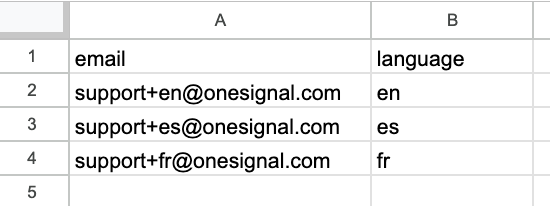
Example CSV to upload and create segment of email testers.
+ addressing in emails to test multiple variations: [email protected]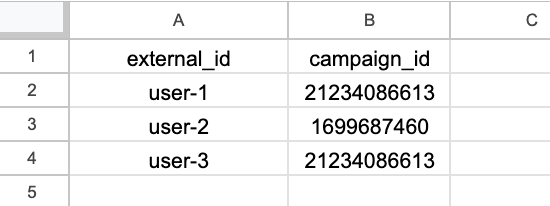
Example CSV to upload and create segment of testers with external_id and the tag campaign_id.
Upload your test segment

Create a segment of your testers to repeat as needed.
View the message
dynamic_content isn’t rendering, reference Fallback content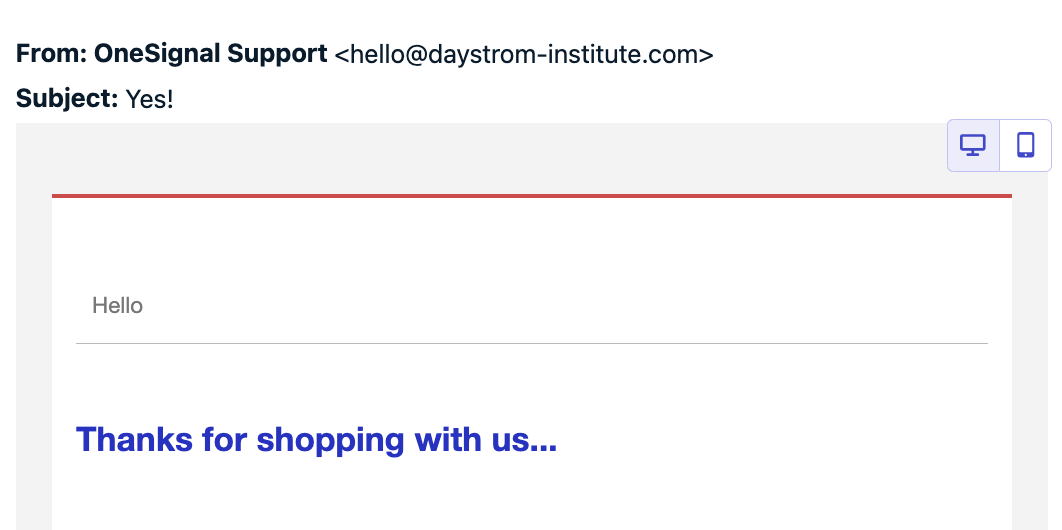
Example shows the email sent with Dynamic Content.

Example shows the push sent with Dynamic Content.
Usage considerations
When to use Dynamic Content vs. Custom Data
- Use Dynamic Content for diverse languages or personalized message blocks.
- Use Custom Data for simple, inline personalization in a single language.
Editing templates
Re-upload CSVs or use thedynamic_content property of the Update Template API to update.

